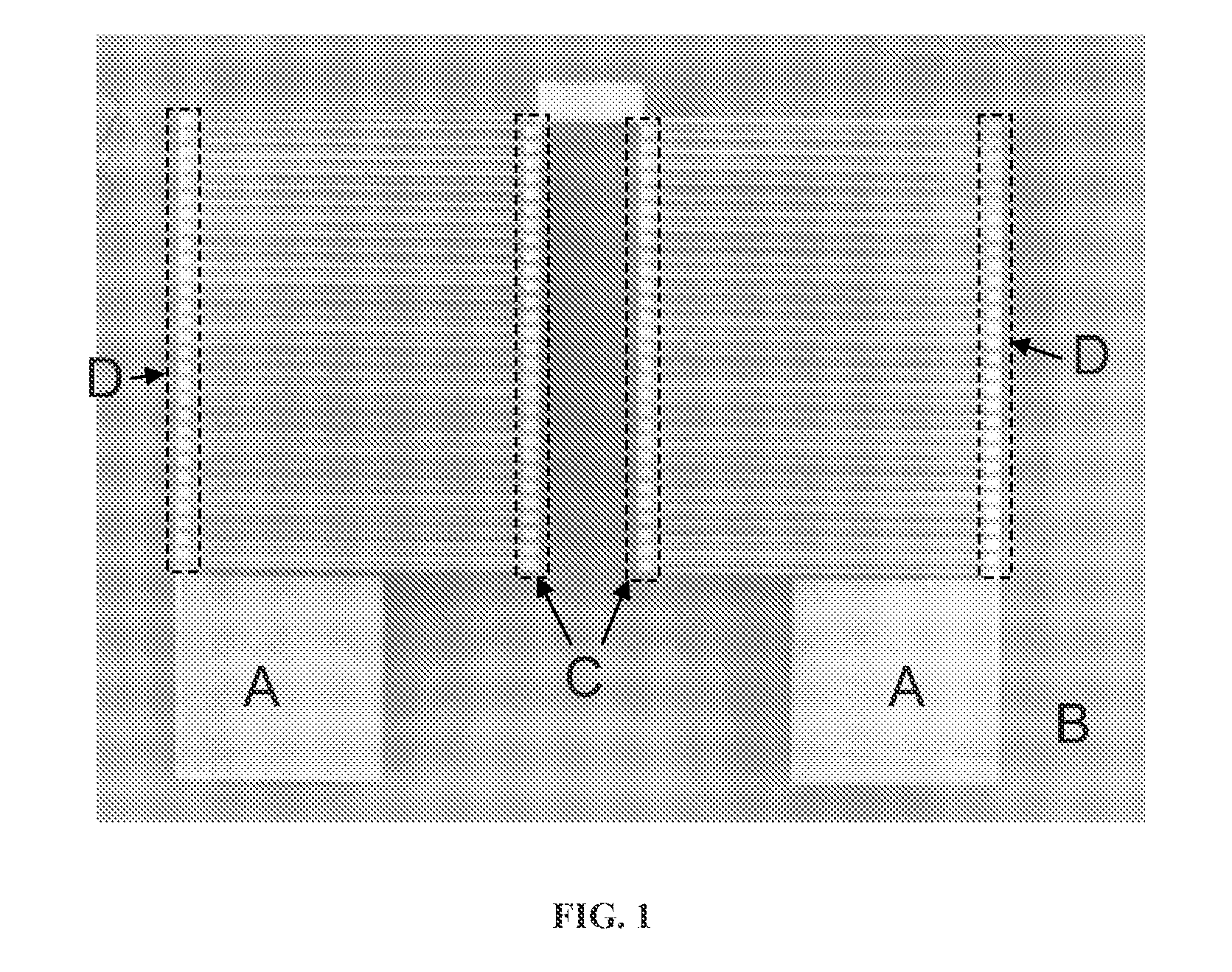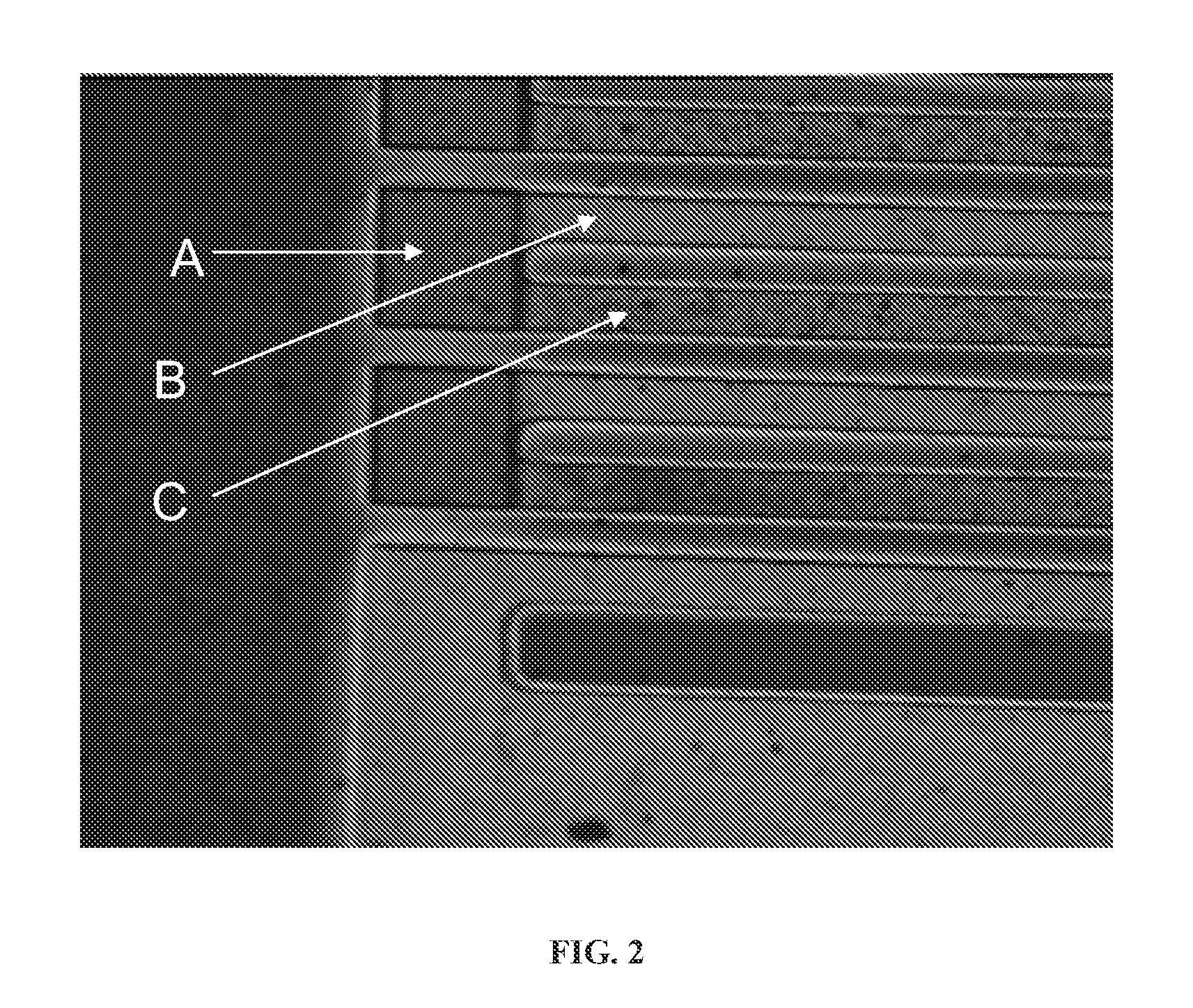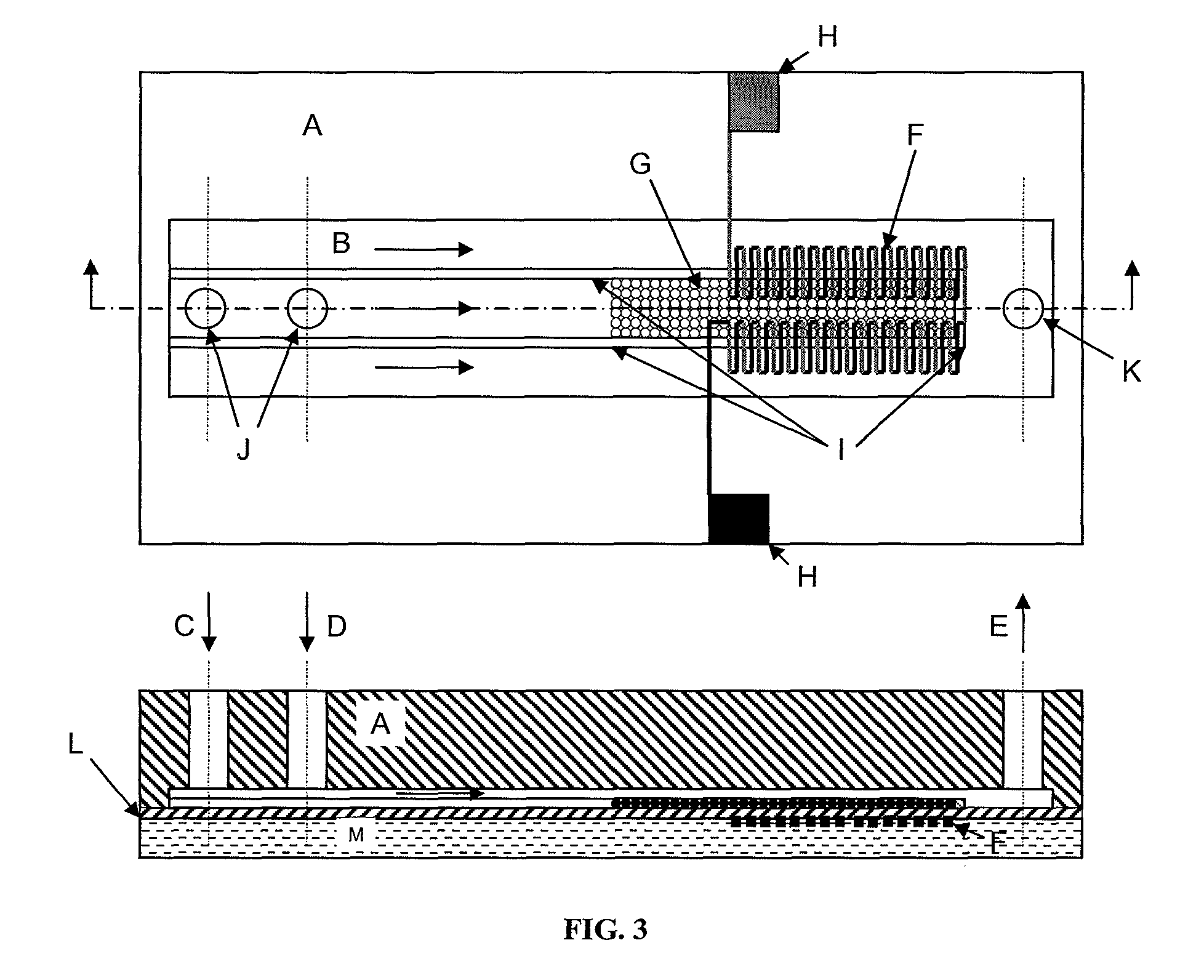Thermoelectric method of sequencing nucleic acids
a nucleic acid and thermal energy technology, applied in the field of nucleic acid sequencing, can solve the problems of inability to easily apply methods to large-scale dna sequencing, high cost of required equipment, and inability to meet the needs of highly trained technicians, and achieves rapid response time, simple and inexpensive means, and rapid determination of nucleic acid sequences.
- Summary
- Abstract
- Description
- Claims
- Application Information
AI Technical Summary
Benefits of technology
Problems solved by technology
Method used
Image
Examples
Embodiment Construction
I. Microcalorimetry
[0058]In commercially available microcalorimeters like the stopped-flow microcalorimeter discussed below, extreme measures are often taken to control the reference temperature and to prevent ambient temperature changes from interfering with a measurement. These measures are needed to insure that the measured thermal energy change is the result of a desired event being studied and not an artifact arising from a change in the temperature of the reference. The apparatus required for such extreme reference temperature control is expensive, requires considerable thermal insulation, considerable space, and expensive, sophisticated electronic equipment. This is especially true of state-of-the-art microcalorimetry equipment designed for the measurement of extremely small temperature increases in small static volumes. Examples of such systems include the microcalorimeter systems manufactured by Thermometrics Sweden (world wide web at thermometric.com / ) and by the stopped-f...
PUM
| Property | Measurement | Unit |
|---|---|---|
| temperature | aaaaa | aaaaa |
| thickness | aaaaa | aaaaa |
| thickness | aaaaa | aaaaa |
Abstract
Description
Claims
Application Information
 Login to View More
Login to View More - R&D
- Intellectual Property
- Life Sciences
- Materials
- Tech Scout
- Unparalleled Data Quality
- Higher Quality Content
- 60% Fewer Hallucinations
Browse by: Latest US Patents, China's latest patents, Technical Efficacy Thesaurus, Application Domain, Technology Topic, Popular Technical Reports.
© 2025 PatSnap. All rights reserved.Legal|Privacy policy|Modern Slavery Act Transparency Statement|Sitemap|About US| Contact US: help@patsnap.com



